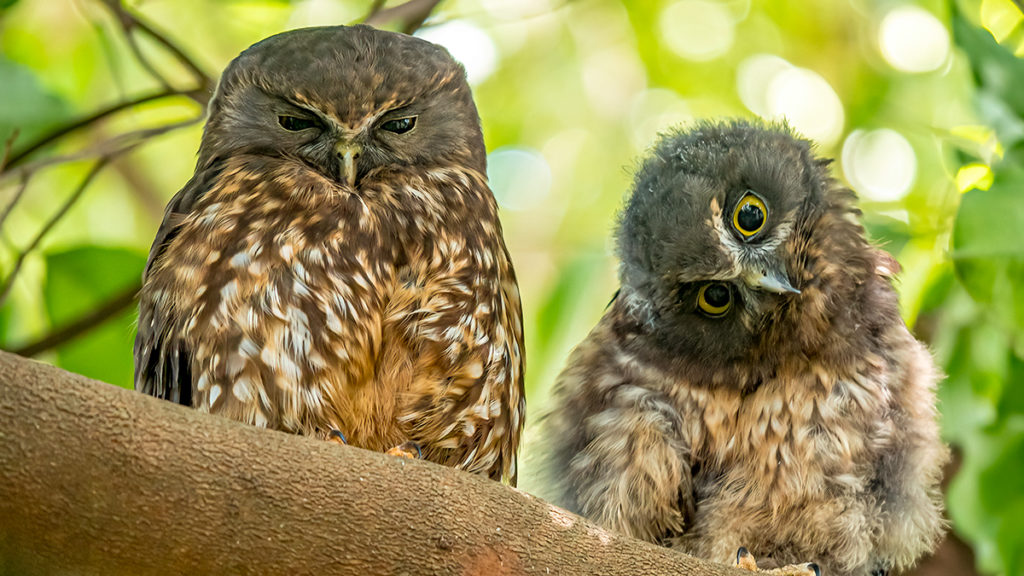We present a completely subjective, non-exhaustive, contestable list of the top backyard wildlife encounters of 2022.
Predator control, responsible pet ownership and native planting are vital ingredients in turning your patch of land, no matter the size, into a place that birds, bugs and lizards want to visit – on their terms. Feeding animals, getting too close or becoming too familiar with wild animals comes with risks to you and the wild species.
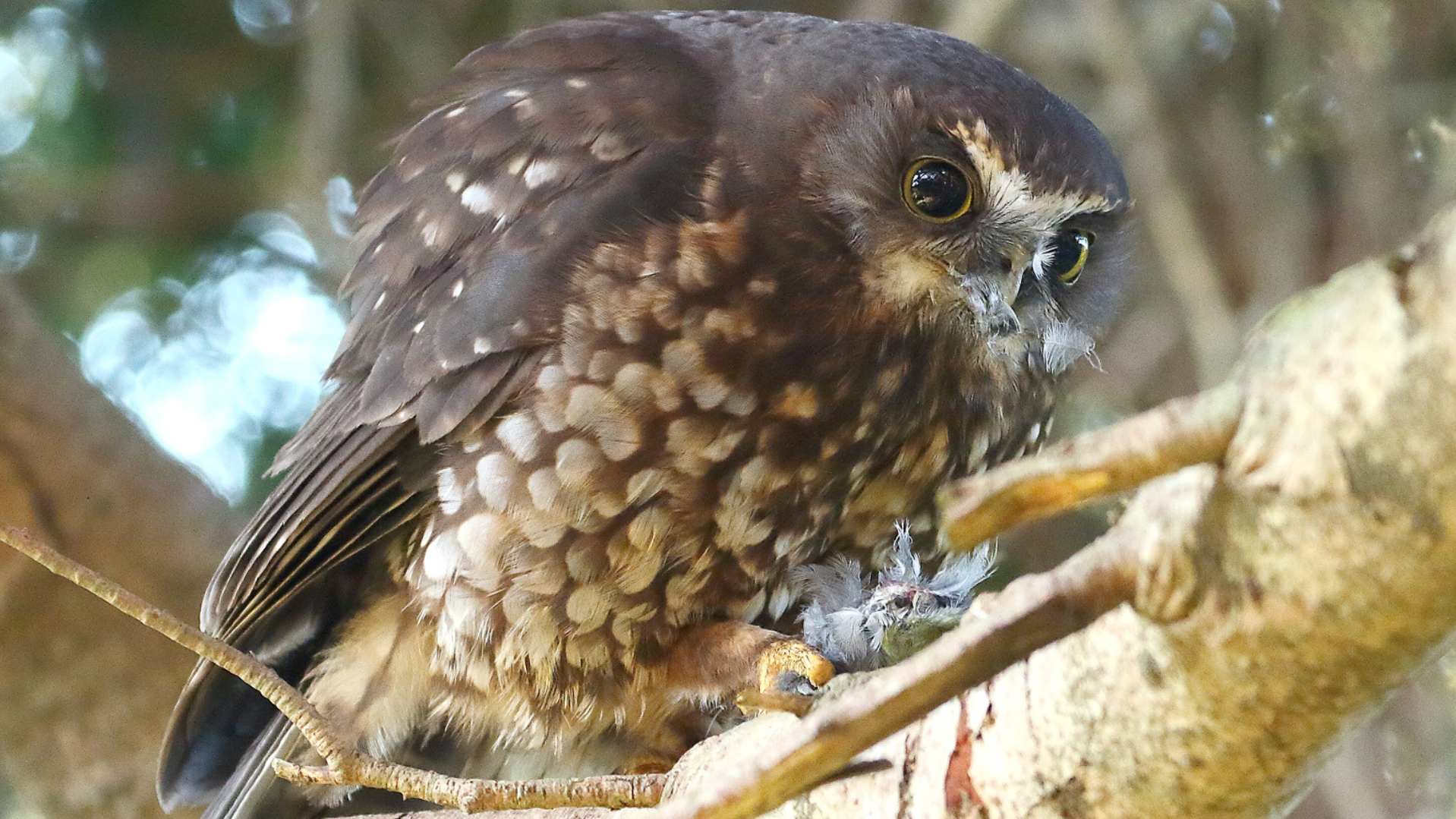
Ruru feast, Wellington
Often heard, seldom seen up close, Melissa Boardman knew there was a ruru (morepork) roosting in the large trees at the back of her garden. One day she finally captured evidence. Hearing a frantic bird commotion, she ran outside with her camera and saw the ruru carrying a small bird to its perch. “I was both delighted and horrified to watch the ruru demolish a tauhou (silvereye) right in front of me.”
👀 If you’re squeamish look away!
— Melissa Boardman | NZ bird fan (@melissaboardman) July 17, 2022
I filmed this ruru (morepork) making a meal of an unlucky waxeye yesterday in my garden. I haven’t seen much footage of ruru eating so I think this is pretty special!
I have another clip to share that is more gruesome than this one 😬#nzbirds pic.twitter.com/7Yx9HVrGID
Kiwi cam, Coromandel
Guy and Angela have kiwi in their backyard. They have a bit of a head start with 20 years of predator trapping under their belt, and it’s been paying off. Their property in the Coromandel Peninsula is a haven for kiwi, geckos, kākā, miromiro (tomtit) and weka. In this report from Waikato Regional Council, the couple use trail cameras to capture video footage of kiwi fighting, belting out their calls, shuffling around the camera and feeding. Guy says if they hadn’t been trapping possums, stoats, rats, mice, hedgehogs and rabbits, “we wouldn’t get videos like that.”
Pūkeko babies, Masterton
Sean Herbert (Digi Ink NZ) spotted a pūkeko family near the flowing creek in his backyard. Heading out with his camera, he realised five babies were living with their parents among the kōwhitiwhiti (marsh cress). Over the next few months, he watched all five survive and thrive, taking hundreds and hundreds of photos of their progress.
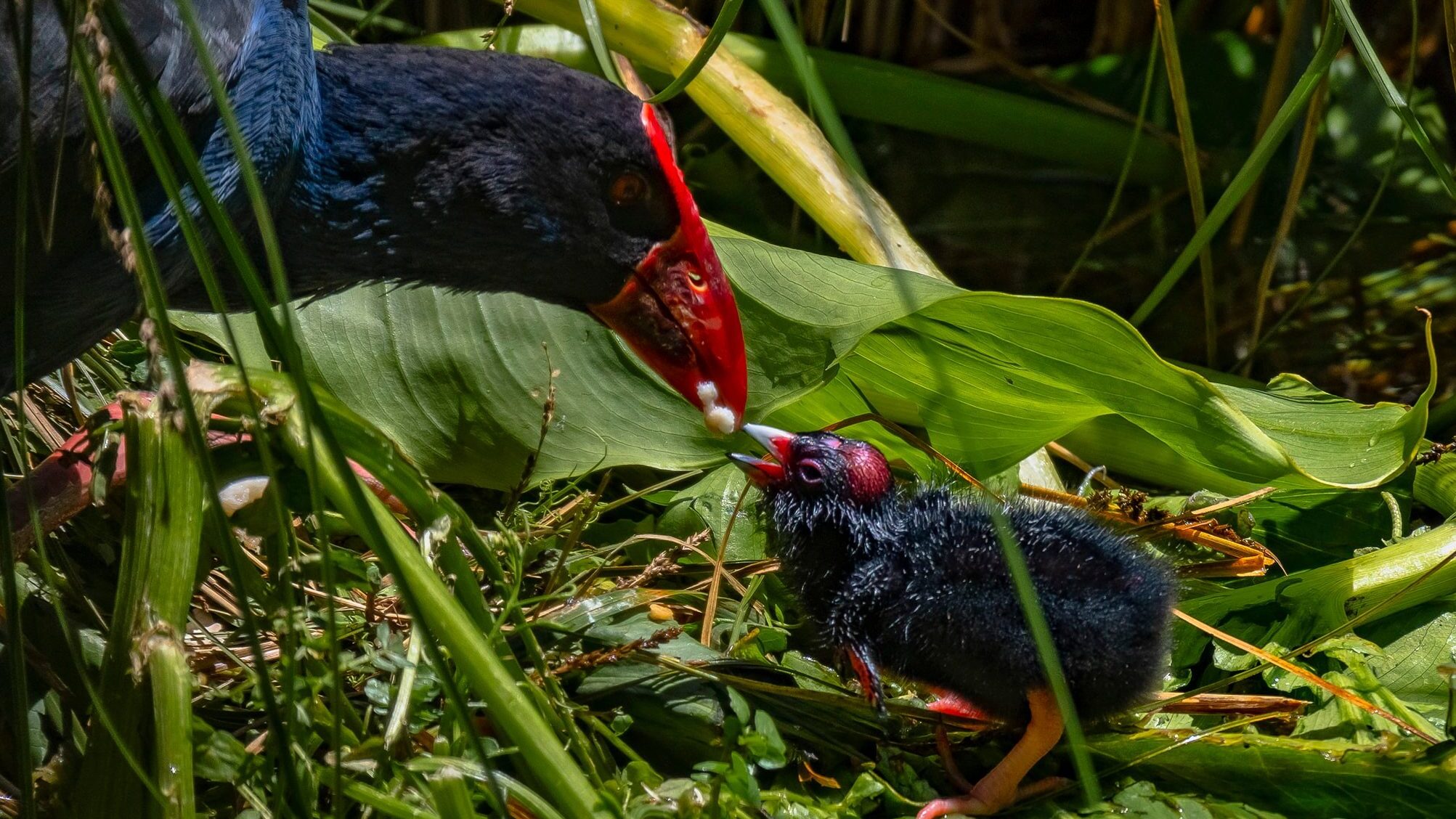
Kākā wrestling match, Wellington
Kākā are regular visitors to Rachel Woolf’s Wellington deck, near wildlife sanctuary Zealandia. “I can get one or two nosy visitors during the day, but occasionally in the evening an entire mob will descend and gallop up and down the balcony railing.” Rachel has a Goodnature A24 trap and a few bait stations under her house to nab introduced predators.
Just kākā wrestling on my balcony pic.twitter.com/dhBmFu0YhJ
— RarghWoolf (@Rarghwoolf) September 15, 2022
Dotterls at home on the farm, Waihī
Tūturiwhatu (dotterels) were found nesting on a Waihī Beach farm. Stuff reported “big-hearted” farmers Merv and Sandra Littlejohn shifting cattle away to protect the endangered birds on their property. More vulnerable than kiwi, ten dotterels picked the cow field as a good place to breed after large swells had destroyed their usual nesting ground. Merv and Sandra were doing their part to remove any stoats, rats and plovers on their property to give the dotterels the best chance at survival.
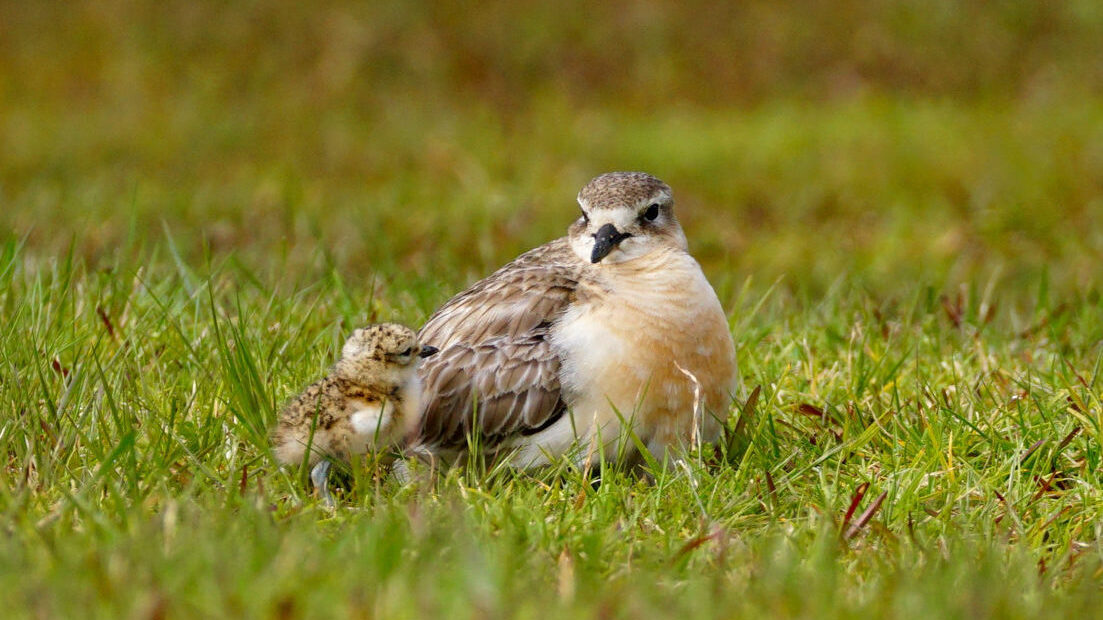
Nursery spider surprise, Tauranga
Rhiannan Tucker found a large nursery spider on her backyard trampoline. Nursery spiders have a leg span of six centimetres or more in adult females (that’s about the width of a credit card). “I used a swing ball racket to gently move her, I’m not quite brave enough to pick up a spider that big!” Rhiannan said. She was calm, and the kids loved looking at her. They placed her in the garden, and she disappeared soon after.
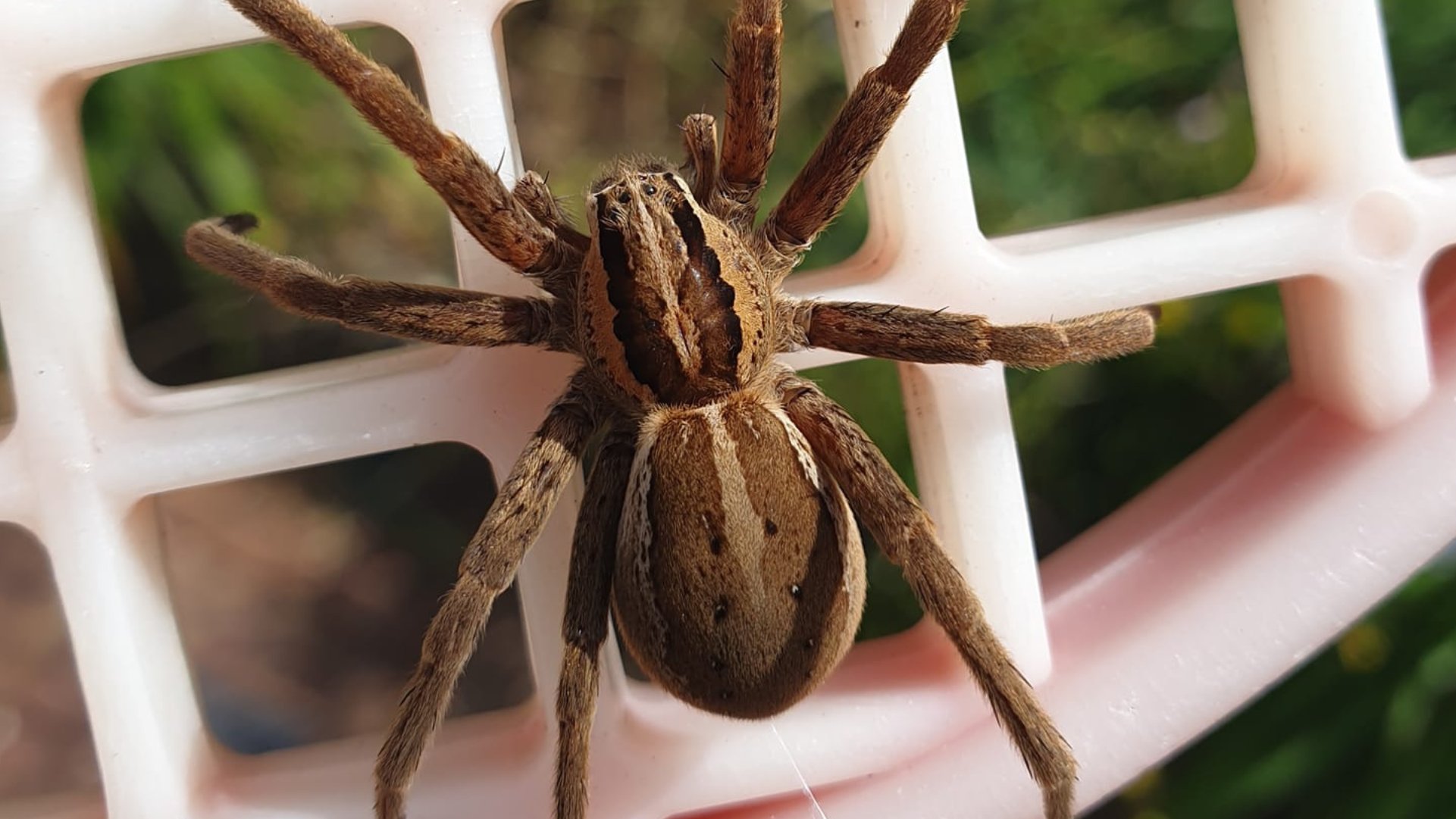
Ginormous worm, Christchurch
As reported by Stuff, Barnaby Domigan found a “ginormous” earthworm in his Christchurch backyard. It appeared to be a 1-metre-long native earthworm, rarely found in domestic gardens. Barnaby reported: “I thought it was massive and amazing and a little bit disgusting.”
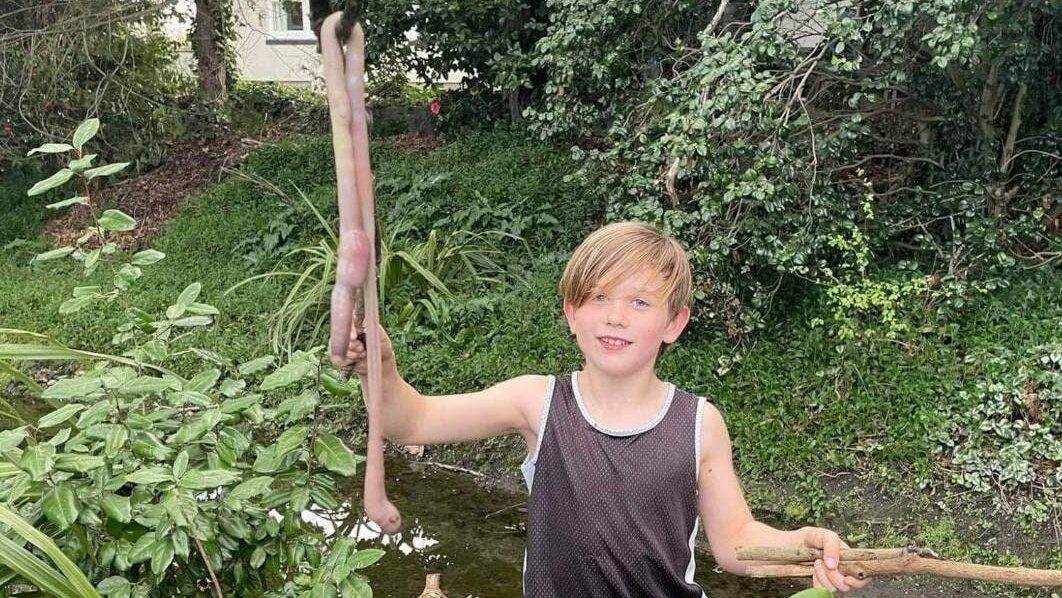
Ruru family affair, Kerikeri
Four years ago a ruru (morepork) family came into Irwin Lawson’s life. It started with a male and female sitting in a big palm leaf near the house, unconcerned about causing a racket amongst the other birds. Since then they have made themselves at home, snoozing the day away in the trees, hunting throughout the night and having chicks every year. “There have been silly daytime scenes that have been special to see, like baby ruru sunbathing flat out or upside down on a giant palm leaf,” Irwin says.
For fourteen years he and his partner grew subtropical plants as food and shelter for birds and animals. They constantly catch rats using T Rex traps baited with peanut butter and possums with a live trap baited with rolled oats, icing sugar and aniseed oil. They have successfully attracted 26 species of birds including ruru, tūī, kōtare (kingfisher), and even kākā.
